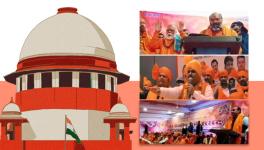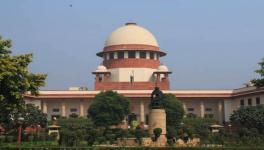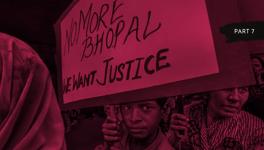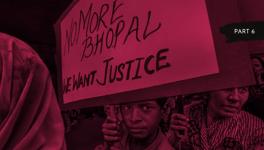Supreme Court’s Mixed Record in 2021 Brings its Counter-Majoritarian Role Under Scrutiny
IT is not possible any longer to analyse the functioning of the Supreme Court of India on an annual basis without also examining the larger political climate within which it functions. It is now more than obvious that the functioning of the Supreme Court is almost always impacted by the political dispensation under which the country functions. The Constitution itself constitutes India into a Sovereign, Secular, and Democratic Republic. However, history has shown that whenever there is a majoritarian government (especially one with a brute majority in the Parliament) in the country, the Supreme Court appears to swing whichever way the wind blows. In other words, the Supreme Court tends to also become a majoritarian institution.
This is, of course, completely contrary to its assigned role under the Constitution, as per which there is meant to be a separation of powers between the executive, legislature, and judiciary. Jurists tell us that the Supreme Court is meant to be a counter-majoritarian institution since the Constitution guarantees fundamental rights to minorities, and non-discrimination on the grounds of religion, race, caste, sex or place of birth. It is expected that these guarantees will be strongly defended by the Supreme Court. This is particularly so when it comes to India’s unique Constitution since it guarantees direct access to the Supreme Court under Article 32, which was described by Dr. B. R. Ambedkar as the soul of the Constitution.
History, however, shows that in times of majoritarian rule the Supreme Court has not functioned as a counter-majoritarian force. Perhaps it is not fair to lay the entire blame on the Supreme Court for the collapse of our fundamental rights for the reason that the present ruling dispensation has perfected the art of functioning in an extra-constitutional framework. The Constitution has been cannibalized, not necessarily through amendments to the Constitution or legislation, but simply by ignoring the Constitution through practice, thereby subverting the rule of law.
The prime example of this is the lynching of minorities and more recently the disrupting of namaz in Gurgugram through mob violence. Courts are accustomed to dealing with statutes and constitutions, and not with practices. A particular attack on a minority will be seen as an aberration or a one-off abuse of the law. However, the abuse of process has now been raised to the level of a policy, leaving us all vulnerable to attacks by violent mobs without any remedy, except to file individual FIRs (first information reports), which are of little use as they wind their way up through the courts.
Also read: State machinery enabled heckler’s veto in its dealing with the Gurgaon namaaz issue
Prosecution is in the hands of the State, and it selectively chooses to prosecute only its critics, not its supporters. In the present scenario, the Hindutva hate-mongers have rarely ever been prosecuted while human rights defenders have found themselves behind bars. All this has happened with the express consent of those who are charged with the duty of protecting our Constitutional rights, especially the Constitutional right to life and liberty.
The Constitution has been cannibalized, not necessarily through amendments to the Constitution or legislation, but simply by ignoring the Constitution through practice, thereby subverting the rule of law. The abuse of process has now been raised to the level of a policy, leaving us all vulnerable to attacks by violent mobs without any remedy, except to file individual FIRs (first information reports), which are of little use as they wind their way up through the courts.
If one were to judge the term of the Supreme Court on the deference of human rights in the Modi years, one would have to say that there is a failure of the role of the Court in protecting fundamental rights.
Nevertheless, an evaluation of the specific role of the Supreme Court during the year 2021 is in order, especially since in April 2021 we saw a new Chief Justice of India (CJI), a judge who has been hailed by some as a saviour. Whether or not he is, history will tell, but compared to his predecessors, he seems more transparent, participatory, and committed to the right to life and liberty.
Chief Justices Bobde and Ramana: contrasting tenures
Much has been said about the previous CJI Sharad Arvind Bobde, which need not be repeated here. One of his most significant acts before he demitted office in April 2021 was to stay the three farm laws in January 2021. The order was certainly out of the ordinary since it came on the express opposition of the Union of India. It could be hailed as an interim order to celebrate. However, sadly, there is a different interpretation as well, that it was intended to diffuse public protests and defer a decision on the constitutionality of the laws. The case will go down in history as perhaps the only one which was completely boycotted by the affected community, namely the farmers, who continued the protest notwithstanding the questionable stay of the laws. The constitutionality of these laws will now never be decided, given their repeal.
Also read: Reflections on CJI S A Bobde
This brings us to the Supreme Court of India as it has functioned under CJI Ramana. There was much speculation whether he would at all be appointed CJI given that the Andhra Pradesh Chief Minister Jagan Mohan Reddy had lodged a complaint against him to the then CJI Bobde alleging that Justice Ramana and his relatives had engaged in corruption in relation to the acquisition of land in the newly-established city of Amravati, and was attempting to destabilize the Andhra Pradesh Government by allegedly influencing hearings and decisions in the Andhra Pradesh High Court. Nevertheless, true to tradition, he was not superseded and was recommended as his successor by the outgoing CJI Bobde upon his retirement.
The case will go down in history as perhaps the only one which was completely boycotted by the affected community.
We have seen his functioning for around eight months from which must be excluded the summer vacation, the Dussehra vacation, the Diwali vacation, and the Christmas vacation. Given the limited number of days we are left with to evaluate the functioning, his tenure to date must be seen as fairly dramatic and breaking with tradition in some ways.
Chief Justice Ramana does not hesitate to speak his mind while in court. Such as, for example, when he said that the law of sedition belongs to a bygone era. He has liberally accepted invitations to speak at book launches and social events, which gives us a rare glimpse into the mind of the judge. When speaking about the lack of representation of women in the judiciary, he supported reservations for women in the judiciary and said, “It’s a women’s right. And they deserve to have it.” He later clarified that what he meant was that there should be affirmative action in favor of women becoming judges so that they have their fair representation in the judiciary.
During a law day event, he said that the task of securing justice was not the responsibility of the judiciary alone and that the other two wings of governance, the executive and legislature were also repositories of constitutional trust to secure justice. He is a media-savvy judge, and all this makes for a very welcome change.
While one is used to retired judges speaking out, it is not often that we see sitting judges speak their minds. In that sense, Justice Ramana does make history, as did Justice Gautam Patel speaking at The Leaflet’s Constitution Day event.
Such transparency is welcome, and we get to know our judges better. Justice Ramana has expressed a pronounced constitutional commitment to freedom of speech and expression, and to bail, not jail.
While all this might seem flattering to the judges, we must record that the CJI has warranted criticism for not listing cases of great importance, such as the petitions challenging the Constitutional validity of the Citizenship Amendment Act, electoral bonds, and the abrogation of Article 370 of the Constitution, among others.
More recently, retired Chief Justice of India Justice Ranjan Gogoi pointed an accusing finger at him in his recently released book, stating that the challenge to Article 370 was assigned to Justice Ramana and he alone was responsible for the delay in hearing the case. We don’t have a response from Justice Ramana yet, except we know that the matter has not been listed.
Two significant decisions on the administrative side gave cause for serious concern, viz., the non-appointment of Justice Akil Kureshi to the Supreme Court, and the transfer of Justice Sanjib Banerjee from the High Court of Madras to the High Court of Manipur. Neither of these decisions has been satisfactorily explained.
Also read: Abolish the power to transfer High Court Judges to safeguard judicial independence
The year also saw the filling up of nine of the ten vacancies on the Supreme Court. We all knew that one of the reasons for the vacancies not being filled up was that Justice Rohinton Nariman, who retired on August 12, had a serious objection to the non-appointment of Justice Akil Kureshi. It was the largest number of appointments that the Supreme Court has seen in one go. It includes the appointment of three woman judges, one of whom will almost certainly go on to become the first woman to hold the office of Chief Justice of India – albeit for only 25 days. Nevertheless, Justice Ramana has shown a commitment to increasing the number of women judges across the country. It is rather obvious though that he will not be able to take this commitment forward without the concurrence of the collegium and the government.
Supreme Court and the vaccine case
Speaking for the Supreme Court, a bench headed by Justice D.Y. Chandrachud suo motu intervened when the second wave of COVID was at its height earlier this year. What was interesting was his comment: “We are not only judges but also citizens.” The judgment of the bench had negative and positive consequences. Dispelling the fear of civil society, the court refused to interfere with the progressive functioning of the high courts on the issue of COVID-19.
The policy of procurement by Union Government of 50 per cent of vaccines from manufacturers and 25 per cent each by states and the private sector, undid one of the most successful government-run free vaccine programmes in the world. The success was due to the fact that the vaccine programme was based on 100 per cent procurement by the Central Government and distribution by the States free of charge. Changing this policy was flawed and was the main reason that vaccines were not available quickly when required. The rollout faltered.
When the bench headed by Justice Chandrachud gave an opinion in what it called a “dialogic process” and found that the policy prima facie violated Articles 14 and 21 of the Constitution, the union government switched gear and increased its procurement to 75 per cent, but the 25 per cent for the private sector was kept intact, for no explicable reason.
This was challenged before the Supreme Court. That apart, though petitions and applications filed at the Supreme Court prayed for compulsory licensing of drugs and vaccines, no decision was taken on them, although the Court could have taken one to make the vaccines available. There was also no explanation as to why the production of vaccines in India was limited to two leading companies, leading to severe shortage and limitations.
Diffusion of technology and production could have been increased to meet the shortages. When these were challenged, the matters were listed but for inexplicable reasons deleted. The matters have not come up again. No wonder, some have commented that the Supreme Court let the government off the hook on the vaccine rollout and compulsory licenses. Very often, it seemed that while the Supreme Court was dragging its feet, the high courts rose to the occasion during the second wave of COVID.
Also read: SC to examine how far constitutional courts can go into executive domain in Covid19 management
Questionable post-retirement positions
The year also saw the predictable appointment of Justice Arun Mishra as Chairperson of National Human Rights Commission (NHRC). While post-retirement appointments have become gifts to pliable judges, it was shocking to see the chairperson of the NHRC make an anti-human rights comment on the occasion of the NHRC’s foundation day, when he said that there is a new tendency to accuse India of human rights violations at the behest of international forces. Perhaps the Commission should be renamed National Commission against Human Rights.
Also read: NHRC Appointments: Hindutva Deep State Expands Armoury
Justice Ashok Bhushan, who retired on July 4, was appointed as the chairperson of the National Company Law Appellate Tribunal within three months of his retirement from the Supreme Court. Justice Gogoi, who retired on November 17, 2019, accepted a nomination as an independent member of the Rajya Sabha, which was also seen as a transparent post-retirement sinecure. There is hardly an office left to which retired judges are not appointed except maybe that of the Vice President or President, which many of them are probably aspiring to. (Former CJI, M.Hidayatullah remains the only former Supreme Court Judge to have occupied the post of the Vice President from 1979 to 1984) Disturbing reports recently emerged of Justice Bobde visiting the Rashtriya Swayamsewak Sangh’s headquarters in Nagpur to meet its Sarsangchalak, Mohan Bhagwat, leading to speculations.
Civil liberties’ highs and lows
One of the most historic decisions of the High Court of Bombay this year was the grant of medical bail to Poet Varavara Rao in February 2021: historic for the reason that he was alleged to be a terrorist and an accused in the Bhima Koregaon case. The judgment recognizes that there is justice behind prison bars and that even prisoners have the right to health which cannot be jeopardized by State action. The court held that his continued incarceration would not be compatible with this right to health given that prisons across Maharashtra had no medical facilities capable of treating his condition.
Also read: Prisoner, Pandemic and the Apathetic State: Why the court should read Vara Vara Rao’s poem
The tragic death of Father Stan Swamy in custody, at the Holy Family Hospital, was a black mark, to say the least, on the prison administration in Maharashtra and the National Intelligence Agency (NIA), which persistently failed to recognize his cries for medical help.
Fortunately, the end of the year also saw the Bombay High Court granting default bail to Sudha Bharadwaj, but tragically denying bail to eight other accused persons under the mistaken impression that they had not applied for default bail. At the time of writing, efforts are being made to correct this obvious error and hopefully, the other eight will also get default bail. This, however, does not address the question of whether the four people arrested by the NIA in this case, namely Gautam Navlakha, Anand Teltumbde, Jyoti Jagtap, and Hani Babu will be entitled to default bail, and efforts are being made to argue for bail on merits.
CJI Ramana has warranted criticism for not listing cases of great importance, such as the petitions challenging the Constitutional validity of the Citizenship Amendment Act, electoral bonds, and the abrogation of Article 370 of the Constitution, among others.
Petitions were filed in the High Court of Bombay challenging the Bhima Koregaon prosecution on the ground that evidence was planted on the computers of Rona Willson and others by remote malware, and demanding an investigation into their framing for false prosecution. They remain pending at the time of writing.
The Madhya Pradesh High Court was much criticized for denying bail to humourist Munawar Faruqui for an anticipated performance that never occurred, which would have allegedly caused communal disharmony. It was the vigilance of the Supreme Court by a bench presided by Justice Rohinton Nariman that finally granted him bail.
Through an interim order on August 19 this year, a division bench of the Gujarat High Court headed by then Chief Justice Vikram Nath (who has now been elevated to the Supreme Court) stayed Sections 3, 4, 4A to 4C, 5, 6, and 6A of the Gujarat Freedom of Religion (Amendment) Act, 2021 passed earlier this year, pending further hearing. These included a provision that termed interfaith marriages as a means for forceful conversion.
The policy of procurement by Union Government of 50 per cent of vaccines from manufacturers and 25 per cent each by states and the private sector, undid one of the most successful government-run free vaccine programmes in the world. The success was due to the fact that the vaccine programme was based on 100 per cent procurement by the Central Government and distribution by the States free of charge.
Among the judgements of the Delhi High Court what stands out are the judgments granting bail to students Natasha Narwal, Devanagana Kalita, and Asif Iqbal Tanha. Moving a step further, an NIA court in Assam discharged Akhil Gogoi of all charges under the Unlawful Activities (Prevention) Act on July 1, 2021 marking the end of his prolonged and unjustified incarceration, leading to a deterioration of his health.
On the eve of Independence Day, 2021 the High Court of Bombay stayed Rule 9(1) and 9(3) of the new Information Technology Rules, 2021 for digital media pursuant to a petition filed by The Leaflet challenging the vires of the said rules. This was a huge victory for the freedom of speech and expression and the rights of the free press, most of which now operate heavily in the digital sphere.
Also read: Explained: Bombay High Court order partially stay new IT rules on plea by The Leaflet
Executive excesses
News broke in July that over 300 Indian individuals, which included politicians, lawyers, activists, and journalists were among those on a list of 50,000 for cyber-surveillance targets across the world. Their phones were either hacked or identified for snooping. This was done through Pegasus, a spyware developed by NSO Group, an Israeli tech company. Petitions were filed in the Supreme Court by affected parties as well as public-spirited individuals seeking a court-monitored investigation. After seeing that the union government was unwilling to acknowledge the allegations or agree to an independent investigation, the Supreme Court on October 27 formed a committee headed by former Supreme Court judge Justice R.V. Raveendran to probe the veracity of the allegations against the union government for its use of Pegasus to target activists, journalists, politicians, judges and government officials.
Also read: Pegasus probe: Why a transparent mechanism is imperative
A few days before the Parliament’s winter session, the President of India promulgated two Ordinances, namely, the Central Vigilance Commission (Amendment) Ordinance, 2021 and the Delhi Special Police Establishment (Amendment) Ordinance, 2021 to extend the tenures of the Director, Enforcement Directorate (ED) and the Director, Central Bureau of Investigation (CBI), respectively, up to five years from the current two years’ tenure. This has received widespread criticism both from the opposition as well as civil society. A petition has already been filed in the Supreme Court to challenge these ordinances. It will be an interesting journey ahead.
Justice Gogoi’s book is selling well, perhaps because it is the first time that a retired CJI has written a book in a typical American style, in simple prose, and in a racy manner, disclosing what went on in the collegium when it came to appointment or non-appointment of judges. He also chooses to cast aspersions on his brother judges, some of whom have retired, while others are sitting judges.
A dubious introspection
December saw the release of an autobiography by former CJI Gogoi. While this is in no sense a review of the book, which must await another day, publishers have informed me that his book is selling like “hot cakes”. Why is it so? The book in no sense of the word succeeds in absolving the former CJI of the main allegations made against him, namely that of sexually harassing an employee of the court, sitting in judgment on his own case, delivering “sealed cover” justice, and accepting a Raja Sabha appointment as a “gift” for judgments delivered. Yet, why does it sell? Perhaps because it is the first time that a retired CJI has written a book in a typical American style, in simple prose and in a racy manner, disclosing what went on in the collegium when it came to appointment or non-appointment of judges. He also chooses to cast aspersions on his brother judges, some of whom have retired, while others are sitting judges. We have to wait and watch and see if they will respond. Meanwhile, Justice Gogoi is laughing all the way to the bank, generating good royalties which we hope he will donate to a worthy cause.
Also read: Has Ranjan Gogoi succeeded in giving himself a clean chit?
And while you are waiting to see the fall out of the book, we wish a happy new year to all our readers.
(Indira Jaising is a human rights activist and senior advocate at the Supreme Court of India. She is also the co-founder of The Leaflet. The views expressed are personal.)
Originally Published in The Leaflet
Get the latest reports & analysis with people's perspective on Protests, movements & deep analytical videos, discussions of the current affairs in your Telegram app. Subscribe to NewsClick's Telegram channel & get Real-Time updates on stories, as they get published on our website.
























